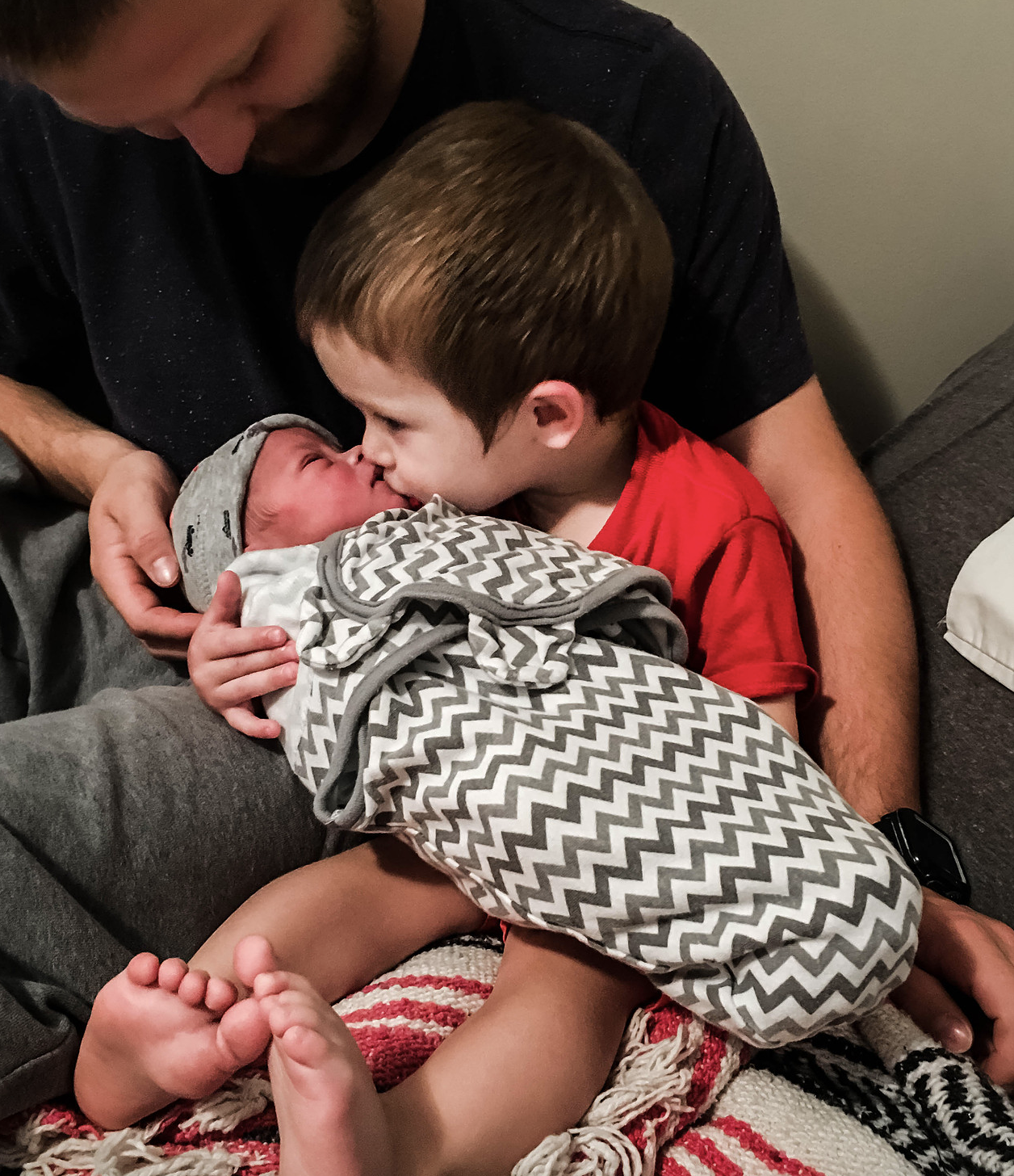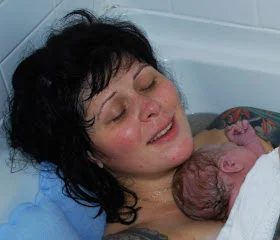Risks and Benefits of RhoGAM
Many expecting parents have questions about whether or not to get the Rh immune globulin (RhoGAM) shot if the momma to-be is Rh-negative. This applies to a small number of women, but it is extremely important for them to be armed with all the information prior to making a decision.
If you are among the roughly 10 - 15% of people who are Rh negative, your pregnancy could be affected if your baby is Rh positive. In this situation, obstetric providers often recommend RhoGAM.
However, it’s not always that simple. If you’re not sure you have all the information for an informed decision, you’re in the right place. Below are some frequently asked questions and points to consider.
What is the Rh factor?
The Rh factor is a protein that can be found on the surface of red blood cells. If your blood cells have this protein, you are Rh positive. If they do not have this protein, you are Rh negative. This is the negative or positive after your blood type: A, B, O or AB. It is simply about different normal variations in red blood cells. For example, you can be A positive or O negative. The negative or positive is your Rh factor. A pregnant woman will get a blood type, Rh and antibody screen as part of the routine prenatal blood tests; if she is Rh-negative, her antibody response will get tested several times as indicated throughout the pregnancy to check for Rh sensitization.
What is Rh incompatibility and sensitization?
Rh incompatibility is when the blood of a fetus is Rh-positive but the momma’s is Rh-negative. In this situation, if baby’s blood gets into mom’s bloodstream, the mother creates a defense system against the different type of blood; it is perceived as foreign by her body, even though it belongs to her baby. She will react against it by making anti-Rh antibodies. When a pregnant mother makes antibodies against the Rh factor on her baby’s red blood cells, it is called sensitization. Once a mom is sensitized, it stays with her forever.
This rarely causes complications in a first pregnancy, as the primary immune response takes time to develop and initially produces IgM antibodies that are too large to cross the placenta. However, it could be dangerous in future pregnancies for the fetus or newborn baby, when the secondary immune response is more rapid and the body has made smaller IgG antibodies that easily cross the placenta. Once these antibodies can cross the placenta, they try to destroy the fetus’s red blood cells.
How can Rh problems affect the fetus during subsequent pregnancies?
Rh sensitization can lead to a wide variety of mild to serious health issues in a fetus or newborn of the next pregnancy. The main concern is a severe type of anemia in the fetus, in which red blood cells are destroyed faster than baby can replace them. Red blood cells carry oxygen to all parts of the body. Without sufficient red blood cells, the fetus will not get enough oxygen, and this can result in hemolytic disease of the fetus and newborn causing jaundice, brain damage, heart failure and death.
How can my fetus’s blood get into my bloodstream?
During healthy pregnancy, a mom and her fetus usually do not share blood, thanks to the placenta that keeps the fetal and maternal blood circulation separate. But sometimes a small amount of blood from the fetus can mix with the mother’s blood. Typically, there is no mixing sufficient enough to risk sensitization unless there is are complications like miscarriage, placental abruption or previa, abdominal trauma, or an invasive medical/surgical procedure like chorionic villus sampling or amniocentesis, abdominal surgery and even ultrasound.
Sensitization is usually associated with a rapid and large volume of fetal-maternal blood mixing. The most common time for Rh-positive fetal red blood cells to enter mother’s bloodstream, is during childbirth, though it can occur at other points during pregnancy - mainly in the third trimester.
Traumatic and difficult births with a high level of invasive procedures increase the likelihood for baby’s blood to mix with mom’s. So can certain routine interventions including use of the synthetic drug Pitocin to induce or augment labor, local or regional anesthesia, forced directed pushing, clamping the umbilical cord too early, pulling on the cord and putting pressure on the fundus to hasten delivery of the placenta.
A gentle birth process with minimal intervention and time allowance for the placenta to separate provides a reduced risk of significant mixing of blood between mother and baby.
While not a guarantee, planning for a natural undisturbed physiologic pregnancy and birth may certainly help prevent the mixing of fetal and maternal blood that leads to sensitization and hemolytic disease.
Can you tell if the baby is Rh-positive?
There is a new noninvasive blood test, which can detect fetal blood type using a blood sample of the pregnant mom. It is said to be highly accurate, almost as reliable as the conventional test, that uses a blood sample of the newborn after birth. It is almost, but not 100% accurate; and it is not available everywhere or covered by all insurances.
I recommend dad getting his blood type and Rh factor tested. If the father is Rh-positive and the mother is Rh-negative, there is about a 75% chance baby is Rh-positive, and providers will probably recommend RhoGAM. But if both parents are Rh-negative, baby will also be Rh-negative; in that case, there is no risk of Rh sensitization, and no need for RhoGAM.
What is RhoGAM?
RhoGAM is a drug made from human blood plasma, that prevents the mother from making antibodies against the positive Rh factor in baby’s blood. It is given via intramuscular injection, to prevent the immune response of sensitization against baby’s Rh positive blood, and subsequent hemolytic disease of the fetus or newborn in future pregnancies.
What are the benefits of RhoGAM?
RhoGAM’s effectiveness has been demonstrated in multiple studies around the globe. According to Dr. Murray Enkin et.al of A Guide To Effective Care in Pregnancy and Childbirth , one of the widely respected and authoritative founders of evidence based care, RhoGAM given after birth reduces the rate of hemolytic disease from 15% down to 1.6%. RhoGAM administration prenatally in the third trimester has been shown in studies to further decrease the incidence to 0.06%.
The administration of RhoGAM medication to Rh-negative mothers is thought to be a major achievement of modern obstetrics by many in the medical profession. Before RhoGam’s introduction into routine practice in the 1970s, hemolytic disease of the newborn was a major cause of serious illness, death and long term disability in babies.
RhoGAM does not typically benefit firstborn babies unless the mom who is Rh negative has previously experienced a reaction to a mismatched blood transfusion, an abortion, miscarriage or ectopic pregnancy untreated with RhoGam.
When is RhoGAM recommended, and why?
For women who are Rh-negative, health care providers routinely recommend a shot of RhoGAM around 28 weeks of pregnancy and then again within 72 hours after birth, in order to protect the baby of a subsequent pregnancy.
Providers must decide about the RhoGAM shot and its dose based on how likely it is for the baby to have Rh-positive blood, as well as how likely it is for the baby and mother’s blood to significantly mix during pregnancy and birth.
Is there controversy around RhoGAM?
This standard approach is not without its critics, especially regarding its routine use during pregnancy, in which only about 1.5% of Rh negative moms with Rh positive fetuses develop antibodies and become sensitized against the baby’s positive Rh factor. Risk of sensitization is significantly higher after birth. Administration of RhoGAM postpartum is much less controversial, where benefits of the medication more clearly outweigh potential risks.
“The problem with routine prescription of prenatal RhoGAM is that many babies who are Rh negative like their mothers will be exposed to the drug, and there has been no systematic study of the long term effects of this product in babies.” - Ina May Gaskin
“RhIG is not given for the direct benefit of the recipient or even her current fetus. The only beneficiary will be an RhD-positive fetus during a subsequent pregnancy (although the woman would also benefit in the event of a wrongly typed transfusion during the time of birth). Furthermore, prenatal prophylaxis unnecessarily exposes the 35% of fetuses who are RhD-negative to RhIG. These babies are at no risk of RhD sensitization. RhIG is completely unnecessary when a baby is the last child in the family. In the absence of clear answers to these pressing questions, the routine use of RhIG assumes that the birth process for RhD-negative women is inherently flawed.” - Anne Frye
Reliable research and meta analysis of the studies on benefit and harm of routine use of RhoGam in pregnancy are still limited, especially as it relates to who, when and which dose is needed, as well as its cost effectiveness.
Some argue that there may be other factors that contributed to the marked decline in severity and prevalence of perinatal morbidity and mortality associated with Rh incompatibility and sensitization, and medicating healthy pregnant women undermines those who trust the inherent wisdom in the natural process of childbearing. That being said, the issue remains an issue which, still today, impacts babies of pregnant women who are Rh negative.
What are the risks of RhoGAM?
Despite excellent results, the medication retains an FDA Pregnancy Category C: “Animal reproduction studies have shown an adverse effect on the fetus and there are no adequate and well-controlled studies in humans, but potential benefits may warrant use of the drug in pregnant women despite potential risks.”
The known possible side-effects to RhoGAM include local swelling inflammation at the site, skin rash, body aches and sometimes hives. Infection from the blood product of modern preparation is rare, but still a possibility.
Expecting mommas should also keep in mind that standard RhoGAM preparation in many countries contains the mercury compound known as thimerosal, which has a litany of health risks. However, pregnant mommas can request the use the mercury-free RhoGAM, if it is available where they live. In the United States, RhoGam is said to be mercury-free, although it may still contain traces.
So, is the RhoGAM shot absolutely necessary during pregnancy?
This is a hard question to answer for each individual person, on a blog. Although much of the research is compelling, it is dated, was largely funded by the pharmaceutical companies and it is not without bias, flaws and some conflicting conclusions. For an eye opening text analysis of the data though 2001 and guidance from a traditional midwifery perspective, check out “Anti-D in Midwifery: Panacea or Paradox? 2nd Edition”, by Sara Wickham.
As always, pregnant mommas should empower themselves with knowledge and talk with their provider to fully understand the benefits and risks of all medications unique to their situation.
I encourage my clients to take great care of themselves, be well-educated on their health-related issues, and to be in tune with their bodies. While I aspire to provide evidence based information about medications and recommended treatments, I also know that there is much we do not know, and I am wary of routine medical and surgical interventions in a healthy natural process Too often they are widely used before sufficiently evaluated or harm has been identified. I feel informed and empowered moms are best able to make decisions for themselves.
Understanding that the vast majority of woman who are Rh-negative will not become sensitized during pregnancy, as it is rare that mixing happens until birth, is an important consideration when balancing the risks and benefits of using a pharmaceutical therapy while pregnant.
If you are Rh-negative and baby’s dad is Rh-negative, no, you do not need the shot. If baby’s dad is Rh-positive, and you choose to refuse the shot in pregnancy, you may still need it later if you suspect bleeding or another reason for sensitization, or if you change your mind. If you have done your research, you believe you are low-risk, and you do not feel comfortable with the shot while pregnant, do not let a provider pressure you.
According to those who advocate a gentle birth process with minimal intervention and time allowance for the placenta to separate, there is usually less risk of significant mixing of blood between mother and baby. But mixing and sensitization can certainly still occur during healthy natural birthing. Traumatic, highly interventive and difficult births increase the likelihood for fetomaternal hemorrhage and sensitization. So can certain routine interventions including ultrasound, use of the synthetic drug Pitocin to induce or augment labor, local or regional anesthesia, forced directed pushing, clamping the umbilical cord too early, pulling on the cord and putting pressure on the fundus to hasten delivery of the placenta - anything that possibly disrupts the delicate physiology of placental separation or cause tiny fetal blood vessels to rupture and bleed. Planning for a natural undisturbed physiologic birth may certainly help prevent the mixing of fetal and maternal blood that leads to sensitization and hemolytic disease.
If you are feeling overwhelmed, or do not even know what questions to ask, I can help you! Check out my number one international best selling book Natural Birth Secrets and my online course - an online version of how I have helped thousands in my local practice. Both resources are unique, but each provide an in depth, one-of-a-kind holistic approach created by me, a seasoned nurse midwife of over two decades, who has seen everything!
If you need more personalized guidance and help navigating these and other tough decisions, you can arrange a consultation with me, bundled with my online course. Or I invite you to choose from a variety of services I offer to the global community. Rock Your Journey To Motherhood is my most comprehensive, supportive offering for pregnant mommas anywhere in the world. You will have personal access and guidance from me as we co-create your joyful journey from pregnancy to postpartum healthy bliss.































